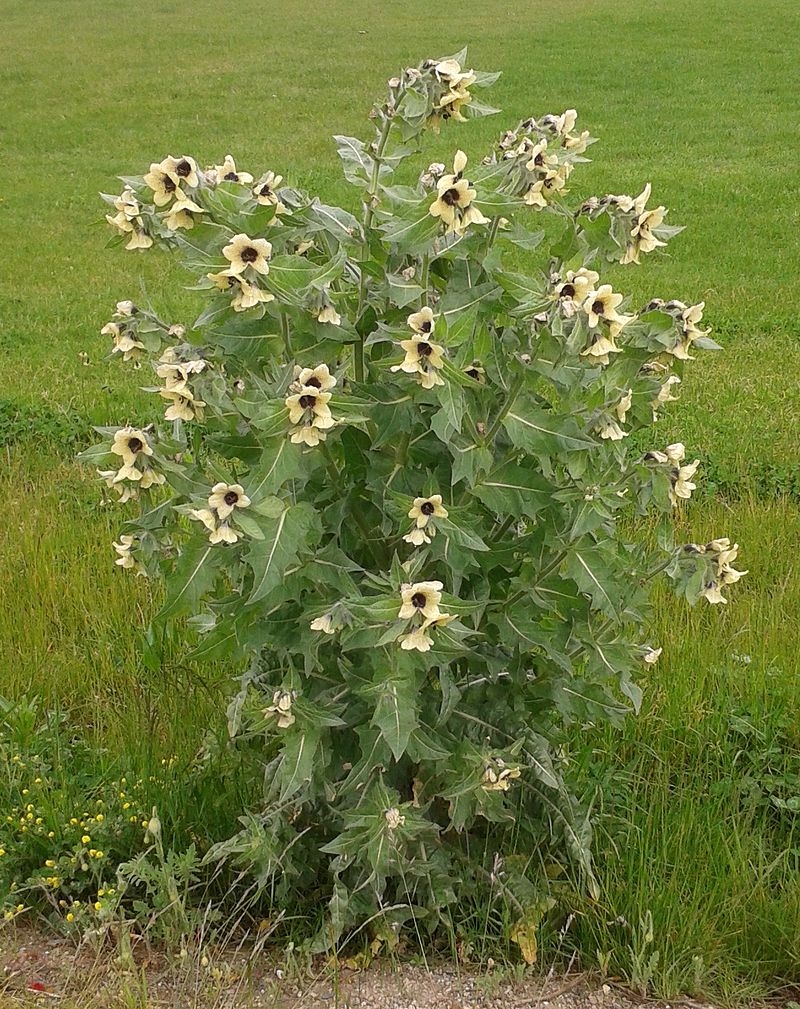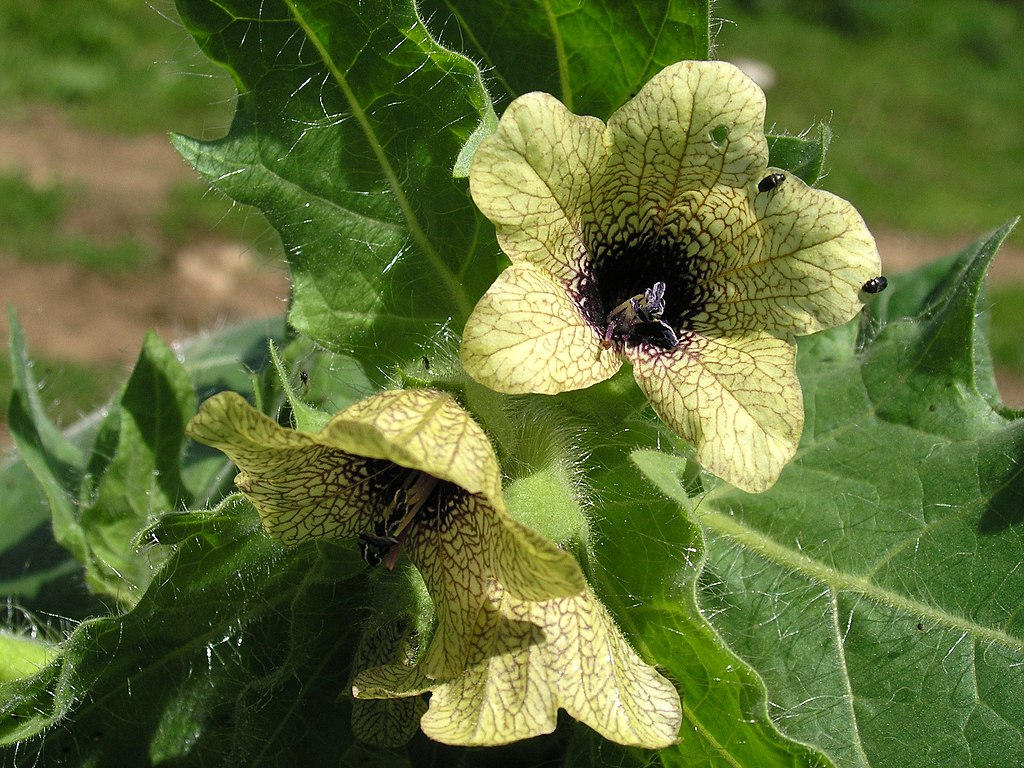
Also known as stinking nightshade, this herbaceous annual or biennial is native to rocky arid areas of Europe and Asia and is a member of the nightshade family, Solanaceae, that also includes potato, petunia, and Chinese lantern. Henbane has been used since ancient times as a sedative and pain killer and during the Middle Ages it was associated with witchcraft. More recently it has been used in making beer as well as to treat a variety of ailments including toothache, rheumatism, asthma, cough, nervous diseases, and stomach pain. There is no good evidence, however, to support these medicinal uses. Photo Credit: Mikenorton-Wikimedia-Commons

Description: The plant grows up to 1-3′ tall from a branched tap root and has a woody stem base that is widely branched. The basal leaves are stalked, up to 8″ long, and have coarsely toothed margins while the stem leaves are stalkless and unevenly lobed. The foliage is covered with fine sticky hairs and is foul smelling. In summer, 5-lobed, funnel-shaped flowers appear singly from the stem just above the leaves. Each 1″ wide flower is subtended by leafy bracts and is greenish yellow to whitish, occasionally mauve, with a conspicuous network of dark purplish veins. The pineapple-shaped fruit contains up to 200 black seeds that can remain viable for up to 5 years. Plants reseed themselves and can become weedy.
Poisonous Properties: All parts of the plant, especially the roots and seeds, are poisonous to humans and cattle, wild animals, fish, and birds if ingested, although pigs are not affected. The plant contains the alkaloids hyoscyamine, hyoscine (aka scopolamine), and atropine that block the function of acetylcholine in the brain and antagonize the muscarinic receptors. The result is symptoms that include hallucinations, restlessness, flushed skin, dilated pupils, and unconsciousness. Other symptoms may be dry mouth, dry skin, fever with rash, vomiting, blurred vision, dizziness, high blood pressure, and rapid heart beat. Severe cases can result in death although in modern times deaths are few and the result of misidentification of the plant or improper use of the plant as medicine. Photo Credit KB Simoglou-Wikimedia Commons